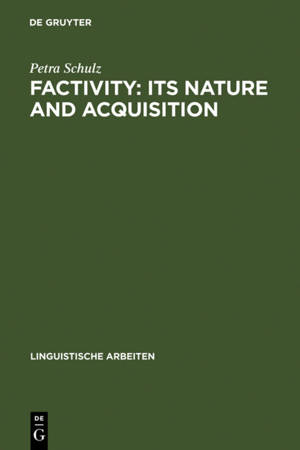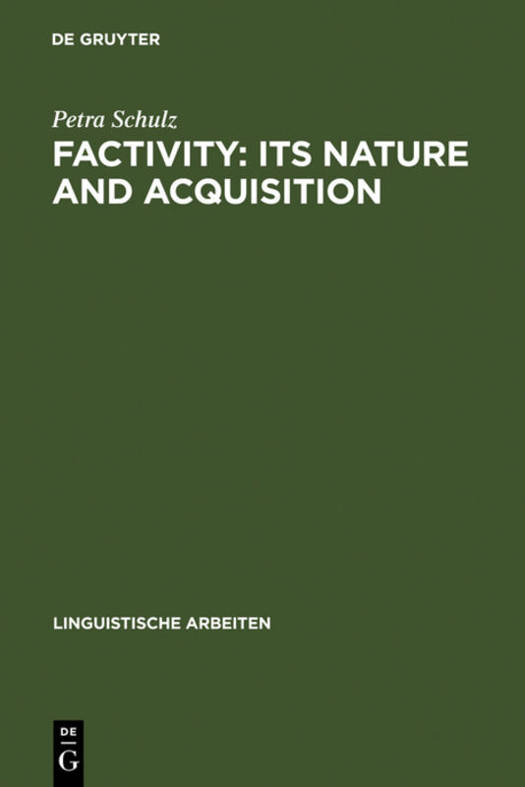
- Afhalen na 1 uur in een winkel met voorraad
- Gratis thuislevering in België
- Ruim aanbod met 7 miljoen producten
- Afhalen na 1 uur in een winkel met voorraad
- Gratis thuislevering in België
- Ruim aanbod met 7 miljoen producten
Omschrijving
Challenging existing lexical-semantic accounts, this book presents a compositional approach to the concept of factivity and its acquisition. Factive sentences such as 'John forgot that he bought wine' presuppose the truth of the embedded complement. The author argues that a satisfactory characterization of factivity can only be accomplished if its multiple dimensions are acknowledged. A thorough examination of the empirical data demonstrates that factivity, rather than being a property of the matrix predicate, results from the complex interaction of lexical-semantic, syntactic, and discourse-semantic factors.
Focusing on English, the predictions of this compositional approach to factivity are tested with production and comprehension data covering children's acquisitional patterns between the ages of 2 and 8. After a comprehensive review of previous studies, the author presents two rigorously designed comprehension experiments and a detailed analysis of two longitudinal corpora. The child data provides convincing evidence that the multidimensionality of factivity is mirrored in the acquisition process by a stepwise mastery of its different components. Children produce and correctly interpret factive structures around age 4, but certain syntactic and discourse-semantic properties are not learned before age 7. This book should be of interest to advanced students and researchers in both theoretical linguistics and language acquisition.
Specificaties
Betrokkenen
- Auteur(s):
- Uitgeverij:
Inhoud
- Aantal bladzijden:
- 262
- Taal:
- Engels
- Reeks:
- Reeksnummer:
- nr. 480
Eigenschappen
- Productcode (EAN):
- 9783484304802
- Verschijningsdatum:
- 5/10/2003
- Uitvoering:
- Hardcover
- Formaat:
- Genaaid
- Afmetingen:
- 156 mm x 234 mm
- Gewicht:
- 548 g

Alleen bij Standaard Boekhandel
Beoordelingen
We publiceren alleen reviews die voldoen aan de voorwaarden voor reviews. Bekijk onze voorwaarden voor reviews.












